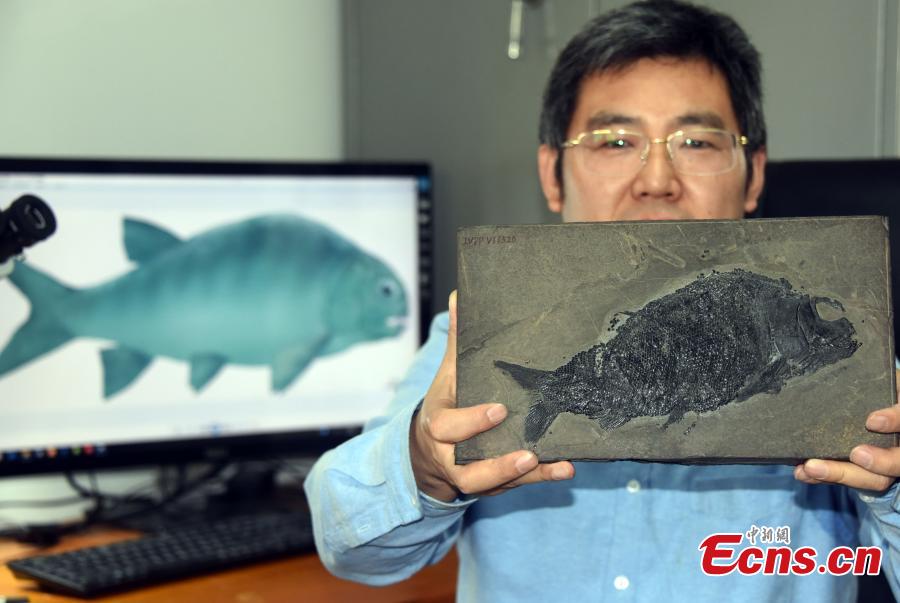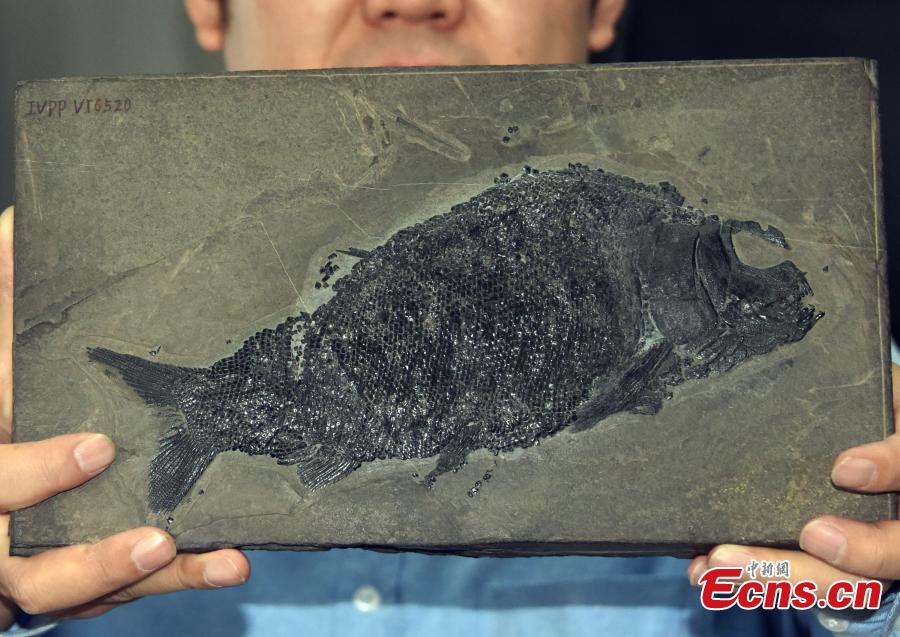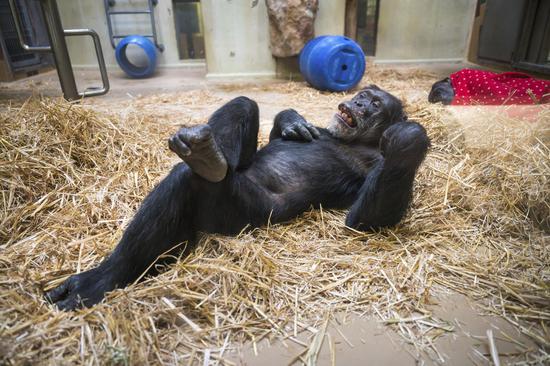
The well-preserved fossil specimen of a new colobodontid, Feroxichthys panzhouensis sp. nov., is presented by Xu Guanghui, a researcher from the Institute of Vertebrate Paleontology and Paleoanthropology of the Chinese Academy of Sciences, April 7, 2021. (Photo: China News Service/Sun Zifa)
A Chinese research team in Panzhou City, China’s Guizhou has discovered the Colobodontidae, a stem group of large-sized neopterygians with a durophagous feeding adaption from the Middle to Late Triassic marine ecosystems, which dates back to 244 million years ago. The new finding provides an important addition for the understanding of the morphological and ecological diversity of neopterygian fishes from the Triassic marine ecosystems in South China.

The well-preserved fossil specimen of a new colobodontid, Feroxichthys panzhouensis sp. nov., is presented by Xu Guanghui, a researcher from the Institute of Vertebrate Paleontology and Paleoanthropology of the Chinese Academy of Sciences, April 7, 2021. (Photo: China News Service/Sun Zifa)
A Chinese research team in Panzhou City, China’s Guizhou has discovered the Colobodontidae, a stem group of large-sized neopterygians with a durophagous feeding adaption from the Middle to Late Triassic marine ecosystems, which dates back to 244 million years ago. The new finding provides an important addition for the understanding of the morphological and ecological diversity of neopterygian fishes from the Triassic marine ecosystems in South China.























